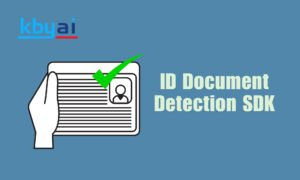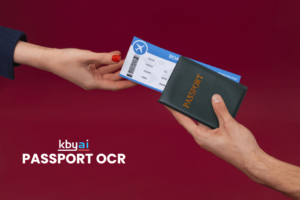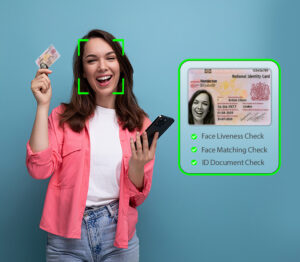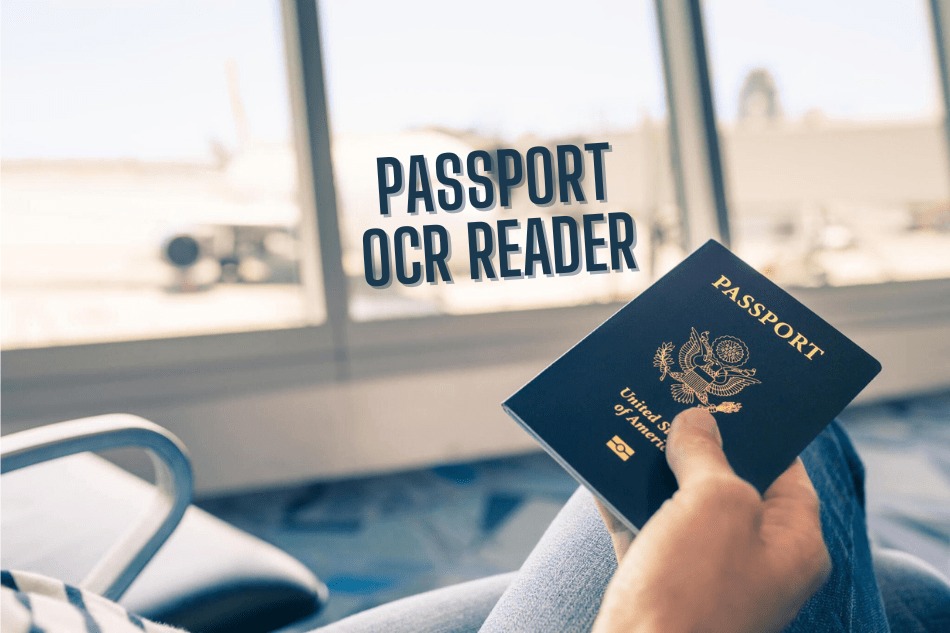An International Passport OCR Reader is a software tool designed to scan and interpret text from passport images. This technology simplifies data entry and increases accuracy in identity verification processes.
A swift and secure verification of international passports is crucial in today’s globalized world. The International Passport OCR Reader plays an essential role in travel and border control situations, effectively reducing lines and enhancing passenger experience by accelerating the authentication process.
This advanced technology employs Optical Character Recognition (OCR) to extract personal details and document information from scanned passport images. Its accuracy and ability to support multiple languages make it an indispensable tool for immigration authorities, airlines, and security agencies. With features designed for integration into various systems, it ensures seamless operations and supports heightened security measures against fraudulent documents. By providing swift digitization of passport information, OCR technology aids in meeting international travel security standards.
Evolution Of Passport OCR Reader Technology
The journey from manual checks to automated passport verification has been transformative. Passport OCR Reader technology has revolutionized how we travel. It reads, interprets, and verifies passport data quickly and accurately. This technology enhances security and streamlines airport processes. Early Attempts at Machine-Readable Travel Documents

Early Attempts At Machine-readable Travel Documents
The inception of machine-readable travel documents (MRTDs) in the 1980s marked a milestone. These early attempts involved simple, two-line formats at the bottom of passports. They encoded essential information in a font readable by machines. These attempts greatly reduced the time needed to process travel documents. Recent Advances in OCR for Passports
Recent Advances In OCR For Passports
In recent times, Passport OCR Reader has seen significant advancements. The modern Passport OCR reader is robust and complex.
- Enhanced Accuracy: Today’s readers use advanced algorithms to decode data quickly and with higher accuracy.
- Biometric Integration: Modern passports include chips with biometric data. OCR readers now combine traditional data extraction with biometric verification.
- Machine Learning:OCR readers are now equipped with machine learning. They continually improve in data recognition and fraud detection.
- Multi-Standard Support: OCR technology supports various international standards. This allows seamless processing of different passport formats and versions.
These advances enable airports and border controls to enhance security measures. They also offer travelers a smoother, more efficient experience.
Fundamentals Of Optical Character Recognition
Optical Character Recognition (OCR) is a technology that converts different types of documents into editable and searchable data. Imagine taking a picture of a passport. OCR software reads the text from that image. OCR is crucial for tasks such as data entry, document processing, and identity verification.
The OCR Process Explained
How does an OCR reader work? Let’s break it down:
- First, the reader scans a document or image.
- The OCR software analyzes the structure of the document image.
- It identifies letters and numbers through pattern recognition.
- Finally, the software converts the characters into a digital format.
For an International Passport OCR Reader, this means extracting personal details quickly and accurately.
Accuracy And Reliability Concerns
Accuracy is vital for OCR software. The correct data must come out. But, there are challenges:
- Text clarity and font inconsistencies affect OCR accuracy.
- Background noise on the document can lead to errors.
- OCR must adapt to varied passport formats.
Reliability also matters. The system must work well all the time. To achieve this, developers test OCR readers extensively. They aim for high levels of accuracy under different conditions.
Passport OCR Readers: How They Work
Travel has never been easier with the latest tech in passport OCR readers. These devices read passports like magic. Let’s dive into how passport OCR (Optical Character Recognition) readers work and make travel smooth.
Capturing The Data
Passport OCR readers start by scanning your passport. They use cameras or scanners. These devices take clear images of your passport pages. They need good lighting for this. The OCR reader looks at the two lines of text at the bottom of the passport page. This is where your personal details are.
- Bright light shines on your passport.
- A camera snaps a photo of the data page.
- The two-line MRZ (Machine Readable Zone) gets captured.
Software Algorithms For Data Extraction
After capturing the data, software takes over. This software is smart. It has special algorithms. These algorithms read the photo from the camera. Then, they find and pull out your info. This info includes your name, passport number, and more. The software can read different fonts and sizes. Sometimes, it even reads handwriting! The software looks for patterns in the text. It uses these patterns to find the right data. Here’s what the algorithm does:
- It reads the MRZ lines character by character.
- The software checks each character’s shape.
- It matches these shapes with letters and numbers.
- The software then converts these into digital text.
It’s a fast process. In seconds, your passport’s info is on a screen. This helps airport staff check your details quickly. They can see if your passport is valid. They also make sure you are who you say you are. This keeps travel safe for everyone.
Global Standards For Machine-readable Passports
Global Standards for Machine-Readable Passports pave the way for secure and seamless international travel. With the rise in global mobility, having a standardized system ensures efficient border checks. Let’s dive into the details that make our travels smoother.
The ICAO Model And Specifications
The International Civil Aviation Organization (ICAO) sets the model for passports. ICAO guidelines offer consistency in security features and biometric data. Every country must follow these specs for passports:
- Biographical page layout: It adheres to ICAO standards.
- Machine-readable zone (MRZ): It has two lines of code at the bottom of the passport data page.
- Biometric chip: This holds the passport holder’s data for e-passports.
Photographs and personal information follow strict guidelines to avoid errors in identification.
Ensuring Cross-border Compatibility
Passport readers worldwide can understand the ICAO model. This avoids delays during international travel. Checkpoints have technology to scan machine-readable passports. This tech reads these features:
- The MRZ
- RFID chip for e-passports
- Visual inspection data
Passports feed into databases that match data with watch lists and travel records. Countries update technology often. They make sure travelers’ passports work everywhere they go.
Key Components Of Passport OCR Reader Systems
When traveling, a passport is your most vital document. Understanding the Key Components of Passport OCR Reader Systems helps us appreciate how technology simplifies travel. These systems check passports quickly and accurately. Let’s discover the hardware and software that make it all work.
Hardware Essentials For Passport Scanning
- Document Scanners: These devices capture high-quality images of passport pages.
- Camera Systems: Advanced cameras read the biometric data from the passport’s chip.
- Light Sources: Proper lighting is crucial for accurate image capture.
| Hardware | Function | Importance |
|---|---|---|
| High-Resolution Scanner | Captures clear images | Ensures data is readable |
| Infrared Camera | Detects security features | Verifies document authenticity |
| RFID Reader | Reads embedded chips | Accesses biometric data |
OCR Software Capabilities
The OCR software is the brain behind passport reading systems. Its role is to interpret the printed information from your passport. Here’s what it must do:- Text Recognition: It turns scanned images into editable text.
- Data Extraction: It pulls personal info like your name and date of birth.
- Format Validation: It checks if the document’s format matches international standards.
- Process Multiple Languages:
- It should work with all international passports.
- Handle Complex Patterns:
- Passports have intricate designs which the OCR must interpret.
- Authenticate Data:
- It compares the scanned info with databases to validate.
Applications Of Passport OCR Reader Technology

Border Control And Immigration
At its core, Passport OCR Reader serves a vital role in border security. It acts as a digital gatekeeper, efficiently verifying travelers’ identities as they cross international frontiers. This automation not only accelerates the process but also significantly reduces human error, ensuring a rigorous check of every passport.- Speeds up identity verification
- Improves accuracy of document checks
- Enhances border security
Automated Passenger Processing Systems
Passenger processing has been transformed by Passport OCR reader, leading to the development of automated kiosks and e-gates. These systems rely on Passport OCR reader to offer travelers a self-service option, reducing queue times and improving the overall airport experience.- Travelers scan their passport at a kiosk.
- Passport OCR reads and verifies the data.
- Travelers proceed to e-gates for boarding or entry.
| Automated System | Function |
|---|---|
| Self-service Kiosks | Document Scanning & Data Verification |
| E-Gates | Automated Immigration Control |
Incorporating Security Features In Passport OCR Reader
Combatting Fraud And Document Tampering
Travel document fraud poses a major risk for border control authorities. By incorporating cutting-edge security features in OCR systems, illegal activities are diligently fought. Here’s how:- Visual authentication: OCR software examines passports for security marks like holograms, watermarks, and fibers.
- Digital verification: It checks the passport’s chip and electronic data against physical details.
- Tamper alerts: Any sign of document alteration triggers an alert, ensuring immediate action.
Biometric Data Integration
Biometric data offers another layer of security in passport verification. Here’s how OCR readers incorporate biometric technology:.- Face recognition: Passport OCR reader can compare a traveler’s face against the photo on the document.
- Fingerprint matching: OCR devices check fingerprints if included in the passport’s biometric data.
- Eye scans: Some advanced systems can scan an iris or retina, comparing it to stored data.
Challenges In Passport OCR Implementation
Dealing With Damaged Or Worn Passports
Passports come in various conditions. Some are brand new while others show age with frayed edges, smudges, or tears. Passport OCR readers must be advanced enough to handle these imperfections. Here’s what makes the situation complex:- Wear and tear can obscure critical information.
- Faded texts or stains create read errors.
- Advanced imaging techniques are a must.
Multilingual Support And Special Characters
Passports from around the world use different languages and scripts. OCR readers must interpret a vast array of characters. Including:| Language | Characters | Remarks |
|---|---|---|
| Arabic | Special Dots | Context-sensitive shapes |
| Mandarin | Complex Strokes | Thousands of characters |
| French | Accents | Critical for meaning |
User Experience And Speed Of Processing
Designing For Efficient Airport Throughput
Designing airport systems for efficiency is vital. International Passport OCR Readers play a key role. The goal is to minimize the steps in the traveler’s journey. Smart designs help travelers move swiftly without confusion.- Brief instructions on the reader guide travelers.
- Strategically placed readers reduce congestion.
- Readers designed for intuitive use prevent delays.
Balancing Speed With Accuracy
| Aspect | Importance |
|---|---|
| Speed | Reduces wait times. |
| Accuracy | Prevents errors and security breaches. |
Training And Machine Learning In OCR Enhancement
Using Large Data Sets For Improved Recognition
In OCR development, using large datasets can dramatically fine-tune the system’s performance. Datasets contain thousands of different passport formats from around the world. This variety trains the OCR system to recognize a wide array of characters and layouts.- Diverse Languages: Rich datasets include numerous alphabets and symbols.
- Font Styles: Exposure to various fonts helps the system adapt to any text style.
- Image Quality: Various image resolutions train the system to read under less-than-ideal conditions.
Machine Learning Algorithms In Data Extraction
Machine Learning (ML) algorithms are the brains behind OCR systems. These algorithms analyze data and make predictions or decisions. With every new document, the OCR system learns and improves. This makes it more effective in data extraction from international passports.| Algorithm Type | Function in OCR |
|---|---|
| Neural Networks | Mimic human brain to recognize patterns |
| Support Vector Machines | Classify data into different categories |
| Decision Trees | Make decisions based on data attributes |
Mobility And Portable Passport OCR Solutions
Mobile Devices And App Integration
Smartphones have revolutionized how we perform tasks. Passport OCR solutions now integrate with mobile devices. Key benefits include:- Speed: Apps process data in seconds.
- User-friendly: Simple interfaces need minimal training.
- Flexibility: Useful anywhere, anytime.
The Future Of Portable Passport Readers
The next generation of portable passport OCR reader technology is on the horizon. Advances include:- Enhanced accuracy with AI learning.
- Greater compatibility with various document types.
- Improved security measures to protect sensitive data.
Comparative Analysis Of Passport OCR Readers
Benchmarking Performance Metrics
Performance metrics are crucial in evaluating passport OCR readers. They give insights into speed, accuracy, and reliability. Here’s what to consider:- Speed: Time it takes to scan and process information.
- Accuracy: Ability to correctly read and extract data.
- Reliability: Consistency of performance over time.
Industry Leaders In OCR Technology
The market brims with OCR technology providers. Yet, some stand out for their advanced solutions. Here are the trailblazers:| Company | Core Strengths | Notable Features |
|---|---|---|
| ABBYY | AI-based recognition | Multi-language support, High accuracy |
| Google Cloud Vision | Scalable cloud solutions | Machine learning, Easy integration |
| Adobe Acrobat | Reliable PDF tools | Text editing, Conversion capabilities |
| Tesseract | Open-source flexibility | Free use, Large community |
Data Privacy And Protection
Regulations Governing Data Security
Global standards shape data security for OCR readers.- GDPR: Europe’s General Data Protection Regulation sets strict rules for data handling.
- PIPEDA: Canada’s Personal Information Protection and Electronic Documents Act protects personal information.
- CCPA: The California Consumer Privacy Act gives residents rights over their data.
Best Practices For Handling Sensitive Information
Protecting data from passport OCR readers involves several best practices.- Use encryption to secure data transmission and storage.
- Implement access controls to restrict who can view personal data.
- Regularly update software to defend against new threats.
- Conduct audits to ensure policies are followed.
- Train staff in data protection.
Integrating OCR With Other Technologies
NFC, RFID, And OCR: A Synergistic Approach
- NFC (Near Field Communication) allows devices to talk when close. Think tap-and-go payments or sharing photos with a tap.
- RFID (Radio-Frequency Identification) uses radio waves. It tracks tags attached to objects. It’s used in warehouse inventory systems.
- OCR (Optical Character Recognition) reads printed text. It turns it into digital form. It’s used to read passport info.
Interoperability With Database Management Systems
OCR tools must talk to databases smoothly. This is what we call interoperability. It is like puzzle pieces fitting perfectly. The OCR system reads the passport. Then, it matches the data with records in the database. This happens in mere seconds.| Technology | Purpose | Result |
|---|---|---|
| NFC | Device communication | Speedy data transfer |
| RFID | Object tracking | Efficient identification |
| OCR | Text digitization | Accurate data capture |

Case Studies Of Passport OCR Reader In Action
Success Stories From Airports Worldwide
- Efficient Queue Management: Singapore’s Changi Airport introduced passport OCR scanners. The result was shorter waiting times for passengers.
- Automated Check-In: London Heathrow employed OCR technology for self-service kiosks. This led to a 70% reduction in manual entry.
- Secure Border Control: Tokyo Haneda Airport utilized OCR for enhanced security. They spotted forged documents much quicker.
Overcoming Real-world Challenges
| Airport | Challenge | Solution |
|---|---|---|
| JFK International | High traffic volumes | Deployed multiple OCR kiosks to speed up processing |
| Dubai International | Diverse document types | Updated OCR algorithms for better accuracy across various passports |
| Amsterdam Schiphol | Language barriers | Implemented multilingual OCR software to reduce misunderstandings |
Future Outlook For International Passport OCR Readers
Innovations On The Horizon
The future shines bright with technological breakthroughs that promise to redefine how passport readers work. Imagining a world where speed, accuracy, and convenience unite brings a wave of enthusiasm.- Integration with biometric technologies: blending facial, iris, or fingerprint recognition for fail-safe verification.
- Mobile passport readers: enabling travelers to use their own devices, cutting down wait times.
- Blockchain for added security: creating immutable passport data trails that enhance security.
- AI-driven document analysis: to spot anomalies more efficiently, automating authenticity checks.
Predicted Impact On Travel And Security
The predicted impact on travel and security is positive. Simplification and acceleration of procedures are expected.| Area | Impact |
|---|---|
| Checkpoint Efficiency | Reduced lines and waiting times at borders. |
| Security Level | Improved ability to detect forged documents. |
| Traveler Experience | More seamless, with less friction during the vetting process. |
| Operational Costs | Decrease for agencies, thanks to automated systems. |
Investing In Passport OCR Reader Solutions
Cost-benefit Analysis
Understanding the financial impact of Passport OCR reader technology is crucial for any business. Performing a cost-benefit analysis helps companies weigh the initial investment against long-term gains. Here are key points businesses consider:- Reduction in processing time leads to more customer throughput.
- Fewer manual errors save on correction costs and customer dissatisfaction.
- Decrease in fraud instances protects the company’s revenue and reputation.
- Efficient data management complies with international regulations, avoiding costly fines.
| Expense Before OCR | Expense After OCR | Annual Savings |
|---|---|---|
| $100,000 | $50,000 | $50,000 |
Funding And Financial Models For Technology Upgrade
Choosing the best financial strategy to upgrade to Passport OCR reader technology can be daunting. Different models exist depending on the organization’s needs:- Outright Purchase: High upfront cost, no ongoing payments.
- Lease-to-Own: Spread the cost over time with eventual ownership.
- Subscription-Based: Regular payments for continual service and updates.
End-user Training And Adaptation
Educational Programs For Border Staff
To ensure border staff are fully equipped to utilize Passport OCR Readers, targeted educational programs are essential. These programs should be:- Comprehensive: Covering all system features.
- Practical: Including hands-on practice scenarios.
- Accessible: Available in various formats for different learning styles.
- Interactive tutorials.
- Real-time simulation exercises.
- Continuous assessment and feedback loops.
User Acceptance And Trust In Technology
Fostering user acceptance and trust in new technologies is a step-by-step process:| Step | Action |
|---|---|
| 1 | Demonstrate the reliability of the OCR Reader. |
| 2 | Show the technology’s benefits and effectiveness. |
| 3 | Encourage user feedback and incorporate suggestions. |
- Clear communication: Explaining how the system protects and streamlines operations.
- Ongoing support: Providing resources for troubleshooting.
- Positive reinforcement: Highlighting the improved accuracy and time savings.
